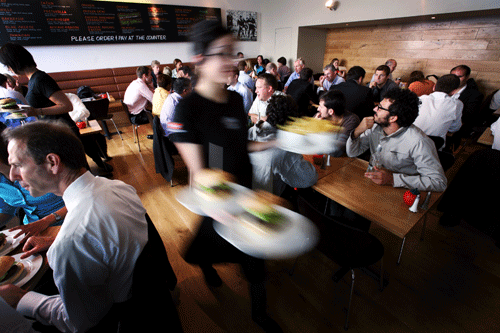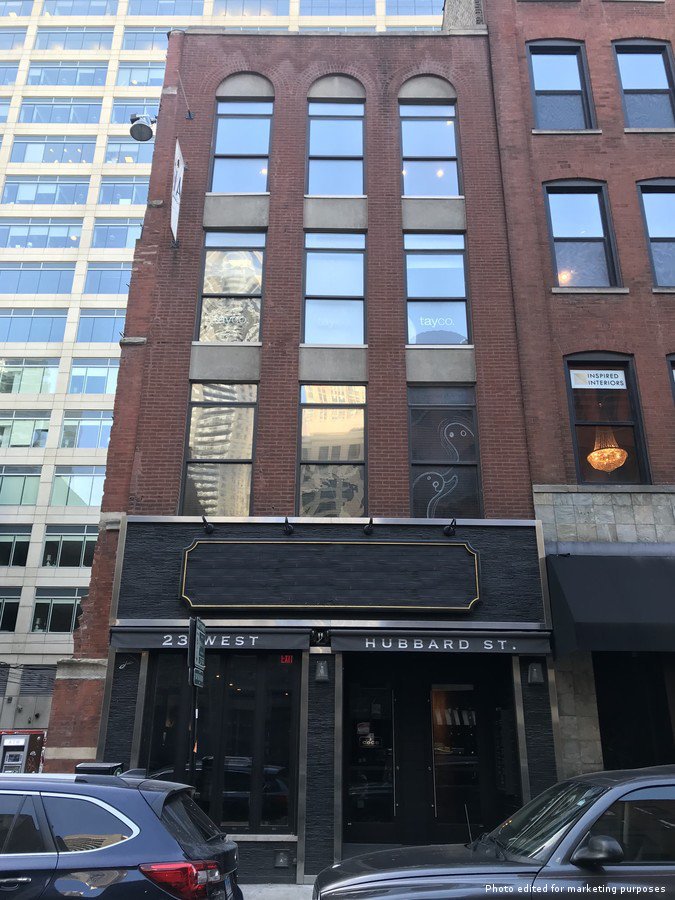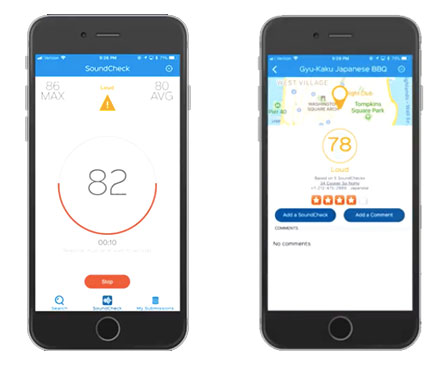
Nov 9, 2018
Pedanco | November 2018
Think about how much it costs to acquire a new customer.
You put up expensive signage inside and outside the restaurant. Your website itself (not to mention the management of it) comes with a monthly cost. You run promotions in-house and offer discounts online to lure customers in. You try to maintain a regular presence on social media. Not to mention the costs of pay-per-click advertising on Google and Facebook.
Oh! And don’t forget about the cost of your marketing team.
Then, of course, there’s the cost to keep your restaurant fully operational in order to make a good impression and provide a great guest experience.
You spend a lot of money in order to attract new clientele. But is it working?
While you may see an increase in foot traffic and online orders from your efforts, have you given any thought to the quality of customers you’ve attracted?
If you’re struggling with low profit margins and high turnover rates, it’s time to do some simple calculations to figure out what has gone wrong.
Calculating the Customer Lifetime Value of Your Restaurant Guests
The customer lifetime value (CLV or, sometimes, just LTV) is a calculation every business must do. And it’s a simple one at that. Basically, it tells you what the monetary return will be on the average guest in your restaurant. If you’re investing all this money in marketing to and bringing in new business, you should know what exactly you’re getting in exchange for your efforts.
Before you do the calculation, you will need to gather some data from the previous year’s sales. Make sure it’s a full year’s worth of data you’re working with.
CONTINUE READING

Nov 2, 2018
Ashok Selvam | Eater | October 25, 2018
Yes, for yet another year Gibsons Bar & Steakhouse in the Gold Coast is the top-grossing independent restaurant in Chicago, according to the latest Restaurant Business Online top 100 list. This year, Gibsons made $25.5 million in sales, a 2.9 percent increase from 2017’s numbers. Gibsons also moved up one spot nationally, from No. 10 to No. 9 this year.
Twelve Chicago restaurants and three suburban locations made the list, giving Illinois 15 restaurants overall. That’s more than double from last year when seven restaurants were mentioned. Primehouse, which closed, is the only local restaurant that dropped.
There’s an obvious skew toward pricey steakhouses as 31 steakhouses made the list nationally. Eleven of those are from the Chicago area. Restaurant Business picked up on that and featured Swift & Sons — Boka Restaurant Group’s Fulton Market steakhouse — in a story about emerging brands. Swift & Sons made the list for the first time and Maple & Ash in Gold Coast was another first-timer. While five Gibsons restaurants made the list, its new riverfront restaurant that opened in October 2017, Gibsons Italia, failed to scratch the rankings. It’s unclear if that’s because the restaurant was still too new for consideration.
The question for many is what will the list look like in 2019 for Chicago? That’s when the list will take into account TAO’s arrival to River North. The clubstaurant chain once again is the top-grossing restaurant in the country, as the Las Vegas location brought in $43.4 million in sales. Two TAO locations in New York also appear on the list at No. 4 and No. 12. Will TAO, which imported Kardashians to the River North opening in September, make an impact on Chicago’s dining scene? Next year, the Smith, a New York restaurant with three locations in the top 100, is also heading to Chicago.
The Chicago-area restaurants that made the list, along with the national rankings and sales numbers, are listed below.
- Gibsons Gold Coast (No. 9, $25.5 million)
- Joe’s Seafood, Prime Steak & Stone Crab (No. 20, $21.3 million)
- Maple & Ash (No. 24, $20.3 million)
- RPM Steak (No. 26, $20.25 million)
- Gibsons Oak Brook (No. 37, $18.3 million)
Full List

Oct 26, 2018
Carla Vianna | Eater New York | October 23, 2018
Restaurants struggling to cope with pricey rent hikes may benefit from a proposed bill — discussed Monday in City Council — that seeks to level the playing field between landlords and commercial tenants in NYC.
The bill, dubbed the Small Business Jobs Survival Act, gives tenants a right to a lease renewal, including a 10-year term for those in good standing. It also lets tenants demand arbitration if a rent hike is too high and extends to all commercial businesses, including restaurants. NYC currently has no restrictions on commercial rent increases.
It’s heavily supported by groups like the Friends of SBJSA, founded by historian and Columbia University professor David Eisenbach, and the Greenwich Village Society for Historic Preservation, who say the city is losing the bulk of its small businesses to hefty rent hikes they can’t afford.
But the bill faces stiff opposition from real estate powerhouses, as well as other organizations like the Manhattan Chamber of Commerce. Real Estate Board of New York, a big opposer of the bill, argues that it fails to tackle the real issues that mom-and-pop shops are facing — like changes to minimum wages. Others say the bill would unleash a series of unintended consequences, such as discouraging landlords from renting their spaces to small operators.
The City Council’s Committee on Small Business discussed the bill Monday, October 22, and moving forward, changes are expected with both sides airing their concerns. It’s been three decades since a similar bill was first proposed, but nothing has ever solidified.
CONTINUE READING

Oct 19, 2018
Ashok Selvam | Eater | October 18, 2018
SVN Restaurant Resource Group’s Scott Reinish represented the tenant in the transaction.
Hubbard Street should soon have a new bar that appears to focus on sweets from one of the co-owners of Shore Club, the restaurant/club at North Avenue Beach. A spokesperson confirmed that JoJo’s Milk Bar is on its way inside the short-lived Coco Champagne Lounge space at 23 W. Hubbard Street. Coco lasted eight months before shuttering in August 2017.
An Instagram page announced that “something sweet is coming to Hubbard Street.” The spokesperson didn’t have many details other than Robbie Schloss, one of the investors in Shore Club, is involved. Another Shore Club partner, Nick Thayer, is included on the bar’s liquor license application, which also lists the business as two floors. Shore Club opened in August 2017, a partnership with the Chicago Park District.
The Instagram posts use hashtags for “milkshake,” “cake,” “desserts,” “diner,” and “chicagogrammers,” so over-the-top boozy or non-boozy milkshakes and sweets could be on the docket. They also use “#fall” so the opening could be coming very soon. Stay tuned for more concrete details when they become available.
CONTINUE READING

Oct 6, 2018
Alisa Hauser & Mina Bloom | Block Club Chicago | October 3, 2018
CHICAGO — Folks who can’t hear what their Tinder date is saying over the blaring music at a burger bar can now whip out their iPhones and warn others to find a quieter place for a conversation.
SoundPrint, described as a “Yelp for noise levels,” allows users to find and rate restaurants, bars and cafes based on noise levels.
Founded by Gregory Scott, SoundPrint launched last year, initially just in New York City where he lives. In a Q&A on the app’s website, Scott said the idea for SoundPrint came about as he was dating.
“As someone with hearing loss, finding a quieter venue is very important,” Scott said. “And searching for quiet spots on Google, Yelp and other websites was not fruitful, as their ratings are subjective (whether the reviewer thinks the place is quiet or loud) and often unreliable. Many times I would go to a supposedly quieter venue and the place would be very loud, which often resulted in having trouble connecting with my date.”
Scott began using decibel meters out of curiosity to measure various venues, and when he found a quiet spot, he would measure it. This resulted in a list of quiet venues that he shared with others, whether they had hearing loss or not.
Since so many other people were interested in Scott’s New York City list, he decided to create the SoundPrint app and expand its reach. The crowdsourced database currently totals more than 30,000 noise level submissions in 12 cities and it recently expanded nationwide on iPhones (an Android version of the app is not available).
The SoundPrint app includes a built-in decibel meter, so users can measure the noise level of a venue and submit the results or “sound checks” to the SoundPrint database, as well as leave detailed comments about the venue.
The app rates sound levels within four categories: Quiet, Moderate, Loud and Very Loud.
CONTINUE READING





